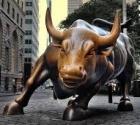One of the recent feature requests we've had as part of Stockopedia Premium is to provide Total Shareholder Return charts over different timeframes - that got us to thinking a bit more about TSR and why it's useful. What's interesting is that you don't see TSR on that many data websites (for stocks, at least - funds is a different story) but you can usually find it on individual company websites, not least because it's a big element in management compensation packages! According to Management Today, in the majority of FTSE 100 companies, performance against this measure is now used as the basis for calculating the major component of directors’ bonuses.
What is Total Shareholder Return?
Share-price based measures like relative strength are all very well but, when assessing stock market investments, it’s important not to fall into the trap of just looking purely at share price movements, while ignoring the value of dividend income. Total shareholder return (TSR) is intended to be he ultimate bottom line of investment performance. It measures the full returns earned by an investment over the period of ownership, including any dividend cashflows paid during that period. In essence, total shareholder return is the internal rate of return (IRR) of all cash flows paid to investors during a particular period.
Over a short time-frame, a company’s TSR may not mean all that much but, over the long-term, it is arguably the single best indicator of comparative investment success because it reflects how well a company has created value for shareholders in highly competitive capital, labor, and product markets. That said, the fact that actual equity returns are usually below the theoretical TSR highlights one of the most significant advantages and risks associated with investing strategies – namely, the gains from the power of compounding, once described as the eighth wonder of the world by Warren Buffett, and the related risk of not reinvesting your dividends.
How do you calculate TSR?
In its simplest form, TSR has two components, the price appreciation rate (i.e. End Share Price - Opening Share Price / Opening Share Price) and the dividend yield (Sum of Dividends per Share / Opening Share Price). As an example, let’s imagine that a shareholder in Company X invests £1.5 at time t, and at time t + 1 the share is worth £2, while the sum of annual dividends over…










